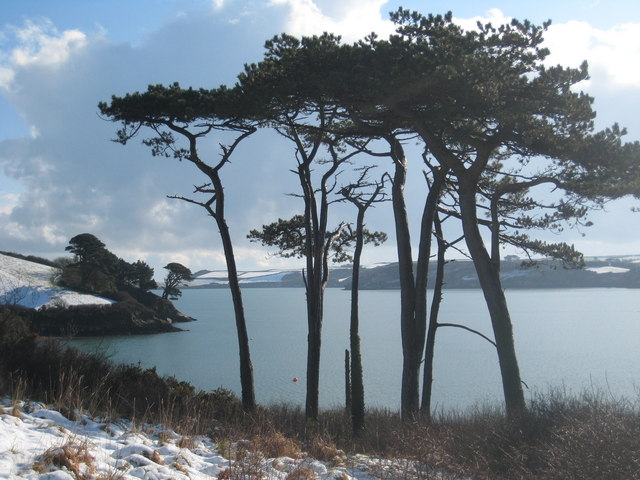Popular American Trees - Monterey Pine
As a native Californian I have a great respect for the flora and fauna of the state I was born and raised in and that includes its native trees. There are so many unique and amazing trees in the state of California to choose a favorite, but I’d have to say among the top ten California tree varieties — the Monterey Pine is one of the loveliest trees.
Monterey Pines by the Helford River
The Monterey Pine is as its name suggests native to what is known as the Monterey Peninsula and when found is almost always along the California coast (near and around Monterey and Santa Barbara), extending to the Santa Rosa and Santa Cruz Islands, and Guadalupe Island off lower California. That doesn’t mean that it wasn’t introduced elsewhere along the California coast. You’ll see many examples of Monterey Pine trees along the coast northward and even as far north as Vancouver Island. Furthermore, these greatly admired trees have been planted in southern and western Europe.
Wherever you find a Monterey Pine you’ll most likely be encountering a big tree. They can grow to heights of more than one hundred feet and usually are quite wide near the bottom of the tree (average five feet in diameter). Their wood is soft and not much good for commercial use, which in terms of tree survival is a good thing. Additionally, the wood is weak particularly as the tree ages. Since they are coastal trees, heavy winds play a part in how the Monterey Pine looks in appearance — since branch breakage can lend to some very interesting tree sculpture by Mother Nature. Some of the wind battled veterans of the Monterey Pine trees are the kind of trees that once you see one you’ll never forget it.
The grass green pine tree needles range from four to six inches in length, grouped in bundles of three (occasionally in bundles of two). These bunches only live about three years average, but that’s not a problem in terms of sheer beauty since the tree is continually replenishing with new ones.
Monterey Bay Panorama From Jacks Peak
Adding to the lovely appearance of this ornamental tree are the pine cones in contrast to the green and the sepia brown to black bark. The cones are about five inches in length. They hold onto their seeds for a number of years and actually the cones may stay on the Monterey Pine for as long as ten to a dozen years. Often they become embedded into the twigs and small forming branches around them.
The Monterey Pine is not cold hearty and cannot tolerate freezing weather. They should be planted in coastal climates, out in the open with little or now competition from other trees to develop a good well-filled out look. The need to be around salt water is essential to keeping this tree happy.
They prefer sandy, well-drained soils without ground cover competition. It is vital that their roots do not become exposed and dried out. One method of protecting against this is making use of burlap bags in the covering in the initial planting of this ornamental tree. The best times to plant them are in the fall or spring.


